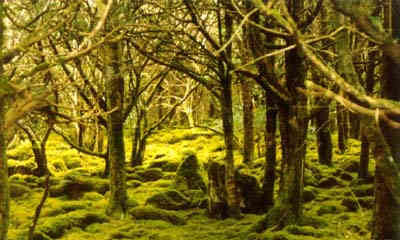

Long established woodlands are sites which have been continuously wooded since 1830, when the 1st edition Ordnance Survey maps were published but for which no documentary evidence has been found that they date back to 1660. Ancient woodlands are defined in Ireland as areas which have been wooded since 1660. Provisional inventory of ancient and long-established woodlands Following the main woodland survey a provisional inventory of ancient and long-established woodlands was undertaken. Unpublished Report to the National Parks & Wildlife Service. (2008) National Survey of Native Woodlands - Volume 2 Woodland Classification. Perrin, P., Martin, J., Barron, S., O'Neill, F., McNutt, K.(2008) National Survey of Native Woodlands - Volume 1 Main Report.
#COPPICE ASSOCIATION OF IRELAND DOWNLOAD#
A threat score was also produced to give an indication of the threats posed to woodlands.Ī Summary of findings of NSNW main findings of the research is available, or you can download the two volume report below: This score allows the relative conservation value of each site to be assessed, and provides baseline data which can be used for monitoring sites in the future. A conservation score has been calculated for each of the woodlands surveyed.


22 subtypes have been recognised including yew (Taxus baccata) woodland and willow (Salix spp) woodland.

The greatest density of native woodlands is found in Waterford, Offaly and Wicklow and the lowest in Dublin, Louth and Carlow.Ĥ major woodland types have been identified: sessile oak – woodrush ( Quercus petraea – Luzula sylvatica), ash- ivy ( Fraxinus excelsior – Hedera helix), alder – meadowsweet ( Alnus glutinosa – Filipendula ulmaria) and birch – Molinia grass ( Betula pubescens – Molinia caerulea). The area under native trees is about 133,000 ha, although the area which would be considered as native woodland is probably 50 ha. Existing published and unpublished information on stands was incorporated into a large database. At each site the details of the plant species, vegetation, forest structure and physical parameters were recorded, including 1,667 relevés. A stratified sampling procedure was used to survey 1,320 sites in detail. This national survey of native woodlands mapped all stands of native woodland >1 ha. The first 2 habitats are being monitored by BEC Consultants and the last 2 habitats by NPWS staff. The results of the survey will feed into Ireland’s reporting input under Article 17 and enable an assessment to be made of the conservation status of four Annex I woodland types found in Ireland: Old sessile oak woods (91A0), Alluvial forests (91E0), Yew woodlands (91JO) and Bog woodland (91DO). Condition and conservation status will be assessed by comparing measured indicators with target threshold values. Between 20, over 100 samples of Annexed woodland habitats, ranging in size between 4 and 10 ha, will be surveyed across Ireland. This Woodland Monitoring Survey is the first monitoring survey of Annex I woodlands to be carried out in Ireland. Under Article 17 of the EU Habitats Directive, Ireland (through NPWS) has an obligation to monitor and assess the conservation status of Annex I habitats, including woodlands. Woodlands Research Woodland Monitoring Survey


 0 kommentar(er)
0 kommentar(er)
